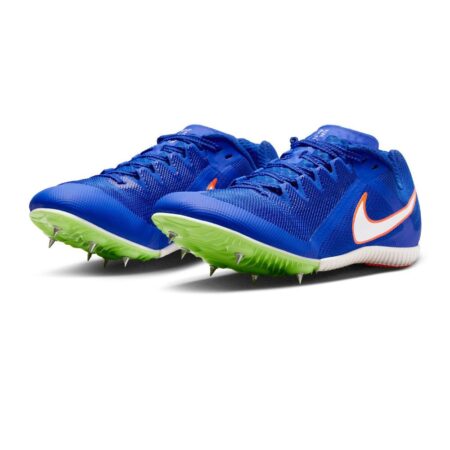Racewalking, often overshadowed by its flashier track and field counterparts, has a rich and surprising history that remains largely unknown to the public. Far from being just a quirky athletic event prone to laughter and skepticism, racewalking has evolved through decades of strict rules, intense competition, and cultural significance. This article delves into the little-known origins and developments of racewalking, uncovering why this demanding sport commands respect rather than ridicule.
The Origins of Racewalking and Its Evolution as a Competitive Sport
Racewalking’s roots trace back to 19th-century England, where “pedestrianism” captured the public’s imagination. Originally a form of long-distance walking competitions, these events were mass spectacles, often stretching over several days and drawing large crowds. Competitors were required to maintain continuous contact with the ground, a rule that distinguished the sport and laid the groundwork for modern racewalking. By the late 1800s, pedestrianism had evolved beyond local fairs and betting contests, gaining organized regulations and formal judging-a transformation that slowly shifted it from a curious pastime to a legitimate athletic discipline.
Over time, racewalking underwent several key developments that propelled it onto the global stage. The inclusion of racewalking events in the Olympic Games, starting in 1904 for men and 1992 for women, marked a significant milestone. These changes coincided with the sport’s growing technical sophistication, particularly the refinement of judging standards to ensure fairness and consistency. Today, racewalking is characterized not only by strict rules but also by astounding endurance displays, as athletes master the balance between speed and technique. Key features include:
- Continuous ground contact: One foot must always touch the ground.
- Straightened leading leg: The advancing leg must remain straight from contact until vertical.
- Judging rigor: Multiple judges monitor form to prevent “lifting,” ensuring rule compliance.
| Era | Notable Development | Impact on Sport |
|---|---|---|
| 19th Century | Pedestrianism as popular spectacle | Established competitive walking rules |
| Early 20th Century | Olympic inclusion | International recognition |
| Late 20th Century | Women’s racewalking debut | Expanded participation |
Why Racewalking Deserves More Respect in the World of Athletics
Despite its origins dating back to the 19th century, racewalking remains one of the most misunderstood disciplines in athletics. Often overshadowed by sprinting and marathon events, it demands a unique combination of endurance, technique, and mental toughness. Competitors must maintain contact with the ground at all times, with the leading leg straightened from the moment of first contact until it passes under the body. This precise form is strictly monitored by judges, adding a layer of complexity and discipline rarely seen in other sports. Far from being a mere footrace, racewalking is a rigorous test of both physical stamina and biomechanical precision.
Several key factors contribute to why this sport deserves greater recognition:
- Endurance and Speed: Top racewalkers cover 20 to 50 kilometers at speeds comparable to casual running, showcasing incredible cardiovascular conditioning.
- Technical Skill: Mastery of the technique not only prevents disqualification but also optimizes energy efficiency throughout the race.
- Cultural Legacy: With roots in pedestrianism, racewalking connects modern athletics with historic walking challenges across continents and centuries.
| Aspect | Racewalking | Sprinting | Marathon |
|---|---|---|---|
| Average Speed | 14-15 km/h | 30+ km/h | 20+ km/h |
| Technical Rules | Strict form; no flight phase | Minimal form restrictions | Endurance-focused |
| Race Distance | 20-50 km | 100-400 m | 42.195 km |
| Judging | Continuous form checks | No judging beyond false starts | No technical judging |
How to Get Started with Racewalking Training and Avoid Common Mistakes
Embarking on a racewalking journey requires more than just putting one foot in front of the other. Beginners often stumble by treating racewalking like running, which can lead to inefficient technique and injury. Mastering the distinctive form-keeping one foot in contact with the ground at all times and locking the leading leg until it passes under the body-is crucial. Start by practicing in front of a mirror or recording your strides to correct posture and hip rotation. Incorporating short, focused sessions that emphasize technique over speed can accelerate progress and build muscle memory.
Many newcomers also overlook the importance of footwear and flexibility. Unlike running, racewalking demands shoes with extra support around the midfoot and good shock absorption to cushion the unique rolling motion of each step. Additionally, neglecting regular stretching and mobility exercises increases the risk of tight hips and lower back pain-common hurdles in racewalking. Consider integrating these simple tips into your routine:
- Warm up with dynamic stretches focusing on hips and hamstrings
- Use a metronome app to develop a consistent cadence
- Schedule rest days to allow recovery of key muscle groups
- Join local clubs or online forums for expert feedback
| Common Mistake | Effect on Performance | How to Fix |
|---|---|---|
| Heel striking too hard | Reduced efficiency and knee strain | Focus on smooth heel-to-toe roll |
| Bent knee on contact | Possible disqualification and injury | Practice locking the knee with drills |
| Rigid upper body | Loss of momentum and speed | Maintain relaxed arms and shoulders |
Concluding Remarks
As racewalking continues to captivate a dedicated following worldwide, its rich and often overlooked history reminds us that the sport is much more than just an unusual gait. From its origins in Victorian endurance contests to its place on the Olympic stage, racewalking exemplifies a unique blend of discipline, endurance, and cultural evolution. Understanding this little-known past not only enriches our appreciation for the sport but also challenges common misconceptions – proving that sometimes, the slow and steady truly do win the race.





